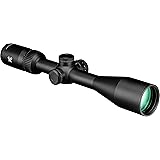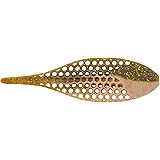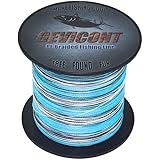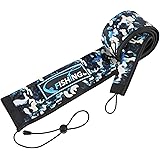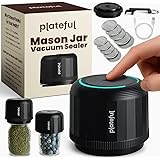The wilderness, natural disasters, or even everyday accidents can present unforeseen challenges that demand swift, decisive action. While the accompanying video offers a rapid-fire overview of several crucial survival hacks, a deeper understanding of these techniques is paramount for true emergency preparedness. This expanded guide aims to provide comprehensive insights, transforming quick tips into robust, actionable knowledge, thereby significantly enhancing one’s capacity for self-preservation and the ability to render critical life-saving aid.
Indeed, a proactive stance towards acquiring and refining these essential skills can often be the determining factor in adverse situations. Presented herein is an elaborate discourse on pivotal survival hacks, ranging from fundamental first aid protocols to advanced environmental hazard mitigation, each section meticulously designed to augment the viewer’s foundational understanding with expert-level detail and practical application. Understanding the ‘why’ behind each technique is as crucial as mastering the ‘how’.
Establishing Foundational Resilience: Water, Fire, and Essential Gear
The fundamental requirements for sustained survival in any environment invariably include access to potable water and the ability to generate heat. As briefly touched upon in the video, rudimentary water purification methods are indispensable. While a simple cloth and sand filtration system, layered with charcoal, can effect some purification, it is generally considered a pre-filtering step. Pathogens such as bacteria, viruses, and protozoa typically necessitate further treatment. Consequently, boiling collected water for a minimum of one minute, especially at altitude, is universally recognized as the most reliable method for disinfection. Chemical purification tablets or portable filtration devices are also highly efficacious alternatives when boiling is not feasible.
Furthermore, the mastery of fire craft extends beyond merely striking a match. The video’s implicit mention of “wind resistance” is critically important; successful fire ignition often hinges upon meticulous preparation of tinder and kindling, ensuring protection from environmental elements. Various ignition sources, including ferrocerium rods, lighters, and even friction-based methods, demand proficiency. A well-constructed fire facilitates cooking, water purification, signaling, and, most importantly, provides psychological comfort in austere conditions. Its multifaceted utility renders it a cornerstone of wilderness survival.
Regarding the essential gear to be carried into nature, a comprehensive medical kit is non-negotiable. The video enumerates several vital components, including repellents, sterile bandages, painkillers, activated charcoal, antiseptic products, plasters, burn treatment products, a folding knife, thread, vegetable oil, rope, and a tourniquet. Each item serves a specific purpose:
- Repellents: Essential for mitigating vector-borne diseases.
- Sterile Bandages & Plasters: Crucial for maintaining asepsis in wound care and preventing infection.
- Painkillers: For symptom management, enabling continued movement or mental clarity.
- Activated Charcoal: Utilized in cases of certain ingestions to absorb toxins, though professional medical advice should always be sought.
- Antiseptic Products: For cleansing wounds and inhibiting microbial growth.
- Burn Treatment Products: Specialized dressings and gels that facilitate healing and reduce pain.
- Folding Knife: An invaluable utility tool for countless tasks, from shelter building to food preparation.
- Thread: For equipment repair, or in extreme scenarios, wound closure (though professional closure is always preferred).
- Vegetable Oil: Possesses varied uses, including the video’s suggested tick removal method, lubrication, or cooking.
- Rope: Essential for shelter construction, climbing, signaling, or even emergency splinting.
- Tourniquet: A critical life-saving device for controlling severe arterial or venous hemorrhage from limb injuries, requiring proper application technique to avoid further harm.
Navigating Biological and Environmental Threats with Precision
Encounters with biological hazards, particularly insects and arachnids, necessitate informed responses. The video’s guidance on tick and bee sting management warrants further elucidation.
Tick Extraction and Post-Bite Protocol
The careful approach advocated for tick removal is paramount. Ticks are known vectors for various pathogens, including those responsible for Lyme disease and, as highlighted, tick-borne encephalitis. The video suggests using vegetable oil and a thread loop, which can coax the tick out. However, current medical consensus largely recommends fine-tipped tweezers to grasp the tick as close to the skin’s surface as possible and pull upwards with steady, even pressure, avoiding twisting or jerking. The objective is to remove the entire tick, including the mouthparts, without crushing its body, which could force infectious fluids into the bite wound. The instruction to take a live tick to a laboratory within 2 days for tick-borne encephalitis testing is a critical diagnostic step, allowing for timely intervention if necessary. Post-removal, the bite area should be thoroughly cleaned with antiseptic.
Insect Sting Management
Distinguishing between bee and wasp stings is crucial, as only bees leave their barbed stinger and venom sac embedded in the skin. Prompt removal of a bee stinger is essential to minimize venom delivery. The video correctly advises against pinching the stinger, as this can inject more venom. Instead, a scraping motion using a rigid object like a plastic card, fingernail, or knife blade (held at a 45° angle) is recommended. This technique effectively severs the stinger from the skin without compressing the venom sac. Wasp stings, conversely, do not leave a stinger, thus attempts to extract one are futile and risk secondary infection. Treatment for both types of stings generally involves cleaning the area, applying a cold compress to reduce swelling, and monitoring for signs of allergic reaction, such as anaphylaxis, which may necessitate an epinephrine auto-injector.
Lightning Safety in the Wild
The perils of a thunderstorm, particularly lightning safety, are underscored in the video. Lightning is an immense threat to life, characterized by its unpredictable nature and devastating power. Key directives include:
- Avoid Tall Objects: Hiding under trees, as advised, is exceptionally dangerous, as lightning often strikes the tallest objects in an area.
- Avoid Conductive Materials: Touching water pipes or riding bicycles/motorcycles increases conductivity and elevates risk.
- Shelter Seeking: Seeking immediate shelter in a substantial building or a hard-topped, fully enclosed vehicle (not convertibles) is imperative.
- Dispel Myths: The notion that “lightning never strikes the same place twice” is a dangerous fallacy; tall structures, for instance, are frequently struck multiple times. Similarly, lightning’s capacity to strike bodies of water, rivers, and lakes necessitates immediate evacuation from aquatic environments during a storm.
In the absence of robust shelter, assuming the “lightning crouch” – squatting low to the ground on the balls of your feet, head tucked, and hands over your ears – can minimize your profile and reduce the area of contact with the ground, though it offers minimal protection.
Addressing Physiological Crises: Hydration, Hemostasis, and Airway Management
The body’s intricate systems are susceptible to various disruptions in emergency scenarios, demanding prompt and knowledgeable intervention.
Oral Rehydration for Dehydration
Dehydration represents a severe threat to physiological function. The video correctly identifies the need to restore water balance with water, salt, sugar, and soda. A commonly accepted formula for an oral rehydration solution (ORS) is as follows: to 1 liter of clean water, add 6 level teaspoons of sugar and 1/2 level teaspoon of salt. The “soda” likely refers to baking soda (sodium bicarbonate), which can further aid electrolyte balance. However, precise measurements are critical to avoid exacerbating the condition. This mixture provides essential electrolytes and glucose, facilitating water absorption and mitigating the potentially fatal consequences of severe fluid loss.
Controlling Epistaxis (Nosebleeds)
The proper management of a nosebleed (epistaxis) is frequently misunderstood. The video accurately refutes the common misconception of tilting the head back, which risks aspiration or nausea from ingested blood. Instead, the correct procedure is:
- Sit upright, maintaining an erect posture.
- Incline the head slightly forward, directing blood away from the throat.
- Pinch the soft part of the nose just below the bridge with your fingers, applying firm pressure for 5-10 minutes.
- Apply a cold compress to the bridge of the nose to induce vasoconstriction.
- Breathe through the mouth and avoid talking.
- Once bleeding subsides, gently clean the nose with warm water.
- Refrain from lying down, blowing the nose, or engaging in strenuous physical exertion for 2-3 hours to prevent recurrence.
Persistent bleeding for more than 30 minutes, or accompanying symptoms of weakness or dizziness, necessitates immediate medical consultation, as it could indicate an underlying systemic issue.
Burn Injury Protocol
Effective burn treatment is contingent upon rapidly assessing the type and severity of the injury. The video differentiates between thermal and acid burns and offers crucial ‘don’ts’.
- Thermal Burns: Immediate cooling with cool (not ice-cold) water for 15-20 minutes is critical to dissipate heat, reduce pain, and prevent deeper tissue damage. After cooling, a sterile dressing should be applied. The ‘don’ts’ – oil, cotton wool, ice, iodine – are important: oil can trap heat; cotton wool adheres to the wound; ice can cause frostbite and further tissue damage; and iodine, while an antiseptic, can be irritating and may obscure wound assessment.
- Acid Burns: These require prolonged flushing with copious amounts of water, also for 15-20 minutes, to dilute and remove the corrosive agent. A neutralizing solution, such as a mild soap and water mixture or a baking soda solution, can be applied *after* initial extensive water flushing, to help neutralize the remaining acid. Again, a sterile dressing should follow.
It is imperative to remove any jewelry or clothing from the affected area promptly, as swelling can rapidly constrict circulation.
Choking First Aid
Airway obstruction due to choking is a true medical emergency demanding immediate intervention. The video outlines the sequential application of back blows and abdominal thrusts (Heimlich maneuver). For an adult, the technique involves five back blows followed by five sharp abdominal thrusts from behind, repeated until the obstruction is cleared or the person becomes unresponsive. For children, the sequence is similar, involving five back pats and five chest compressions (for infants) or abdominal thrusts (for older children). Recognizing the signs of complete airway obstruction – inability to speak, cough, or breathe – is the initial and most critical step in saving a life.
Conquering Aquatic Emergencies: Ice, Water, and Rescue
Water-related incidents pose unique and often rapidly evolving challenges, demanding specific responses for survival and rescue.
Survival After Falling Through Ice
Falling through ice into frigid water triggers an immediate, life-threatening crisis. The video’s emphasis on not panicking and controlling breathing is foundational, as the initial cold shock response can induce hyperventilation. The “1-10-1” rule is a vital framework: one minute to control breathing, 10 minutes of meaningful movement before muscles seize due to hypothermia, and one hour before becoming unconscious due to hypothermia. Crucially, clothing should not be removed immediately, as trapped air can provide buoyancy and insulation. Self-rescue involves turning towards the direction of approach (stronger ice), placing both arms flat on the ice, extending the torso, and using elbows and palms to lever oneself out. Once on the ice, spreading one’s weight by crawling or rolling towards solid ground minimizes the risk of breaking through again. Immediate movement to a warm, dry environment is essential to prevent severe hypothermia.
Navigating Water Hazards
Emergencies while in water often test composure. The video addresses several scenarios:
- Leg Cramps: A common affliction, often relieved by taking a deep breath, diving under, and firmly pulling the toes towards the body to stretch the cramped muscle. Maintaining calm facilitates this action.
- Strong Currents: Fighting directly against a strong current is an exercise in futility and rapid exhaustion. The more effective strategy is to utilize the current, swimming diagonally towards the nearest shore, allowing the current to assist in progress rather than impede it. This is analogous to a ferry crossing a river.
- Whirlpools: These can be terrifying but are often manageable. A deep breath and a dive beneath the surface, pushing off in the direction of the current, can allow one to escape the rotational force and ascend to the surface outside the vortex.
- Drowning: If caught in a situation where one is drowning, the primary goal is to conserve energy and maintain buoyancy. Turning onto the back or stomach, spreading arms and legs, and performing light sculling motions can help keep the head above water. Crucially, avoiding full exhalation helps maintain buoyancy, as the lungs act as flotation devices.
Recognizing Drowning and Performing Rescue
Identifying a drowning person is often challenging, as the “Instinctive Drowning Response” differs significantly from theatrical portrayals. Key signs include:
- Head thrown back, mouth open, often submerging and re-emerging from the water.
- Eyes fixed on a single point or closed.
- Arms stretched out to the sides, pressing down on the water.
- Body upright, but legs are not moving.
- Absence of vocalization or waving for help, as the person’s priority is breathing.
Rescuing a drowning person demands extreme caution. It is unequivocally stated that one should only attempt a rescue if one is a proficient swimmer and in good physical condition. Approaching a drowning individual must always be from behind to prevent them from grabbing onto the rescuer and potentially pulling both under the water. The rescuer must secure a firm grip, ideally from below, and swim quickly to the nearest shore. Various carries, such as the cross-chest carry or chin tow, can be employed depending on the victim’s state and rescuer’s training. The primary objective is to maintain control of the victim and facilitate their removal from the water without endangering the rescuer.
Everyday Discomforts: Small Hacks for Greater Well-being
Beyond life-threatening situations, the video also offers a series of practical solutions for common, albeit less severe, physiological discomforts. While not direct life-saving tips, these can significantly impact daily well-being and maintain focus, which is itself a form of resilience.
- Headache from Cold Food (“Brain Freeze”): Pressing the tongue against the roof of the mouth helps warm the sphenopalatine ganglion, often alleviating the sharp pain.
- Uncontrollable Laughter: A quick pinch or other minor physical distraction can disrupt the involuntary reflex.
- Blocked Nose: Placing an onion nearby may stimulate nasal passages due to its sulfur compounds, promoting clearing. Alternatively, a Valsalva maneuver (holding breath and bearing down) can sometimes help.
- Racing Heart: Blowing on one’s thumb can stimulate the vagus nerve, initiating a reflex that slows heart rate, a maneuver often used to resolve supraventricular tachycardias.
- Itchy Mosquito Bite: Applying deodorant containing aluminum salts can act as an astringent, reducing swelling and itchiness. Menthol-based products also provide a cooling, distracting sensation.
- Difficulty Sleeping: Rapidly blinking for one minute strains the eye muscles, which can induce fatigue and promote sleep.
- Feeling Sleepy: Holding one’s breath and then exhaling deeply can provide a sudden burst of oxygen and alert the system.
- Nausea: Squeezing the thumb (specifically, applying pressure to the P6 acupressure point on the wrist, though a thumb squeeze can be a rough approximation) is an anecdotal remedy for nausea.
- Seasickness: Looking at the distant horizon helps to re-synchronize the visual and vestibular systems, reducing disorientation. Ingesting ginger is a scientifically supported antiemetic.
In essence, these myriad survival hacks, from the most critical emergency response protocols to minor comfort remedies, collectively underscore the value of comprehensive emergency preparedness. It is through dedicated study, practical application, and an unwavering commitment to learning that one truly fortifies their capacity to navigate life’s inevitable challenges, ensuring the greatest chance of a positive outcome in any circumstance. The ability to react effectively, guided by informed expertise, is undeniably one of the most invaluable life-saving skills an individual can cultivate.




